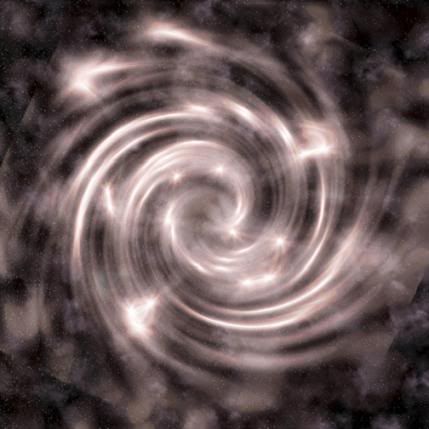Post by glactus on Sept 27, 2009 4:34:05 GMT

4 Galaxies in collision
In a galactic replay of merging of the Earth's tectonic plates into a massive supercontinent known as Pangea 250 million years ago, the Spitzer Space Telescope caught images of four massive galaxies slamming into each other and kicking up billions of stars like grains of sand! As the largest galactic pileup in the known universe, it will produce a huge offspring.
The massive collision will eventually cause the four galaxies to become a single behemoth galaxy that will be about 10 times bigger than our Milky Way. From a scientific perspective, this rare sighting provide and unprecedented look at how the most massive of galaxies form.
The new quadruple merger was discovered serendipitously during a Spitzer survey of a distant cluster of galaxies, called CL0958+4702, located nearly five billion light-years away.
The infrared telescope first spotted an unusually large fan-shaped plume of light coming out of a gathering of four blob-shaped, or elliptical, galaxies. Three of the galaxies are about the size of the Milky Way, while the fourth is three times as big.
Some of the stars tossed outward in the monstrous merger will orbit in isolated areas outside the borders of any of the galaxies. Such abandoned stars would have planets with night-time views strikingly different from our own. Rather than seeing many individual stars, there would be more visible galaxies adorning the night sky.
Though stars in merging galaxies are tossed around like grains of sand, the shear quantity of space between objects ultimately allows the galaxies to survive the ride.
While mergers between pairs of galaxies that are similar, or one big galaxy and several smaller ones, has already been documented—no major mergers between multiple hefty “big rig” galaxies have ever been seen until now.
Three of the galaxies are the size of the Milky Way, while the fourth is three times as big.
When this merger is complete, this will be one of the biggest galaxies in the universe.
Credits: Rebecca Sato: the Daily Galaxy.com
www.dailygalaxy.com/photos/uncategorized/2007/08/07/galaxies_colliding_2.jpg


